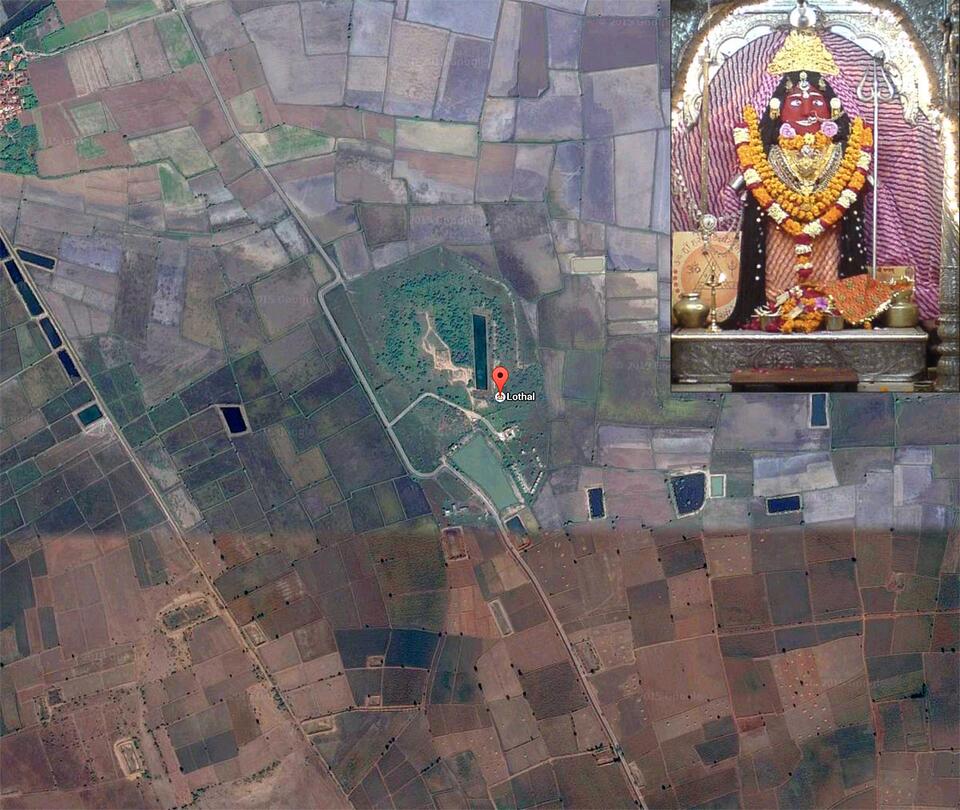March 30th, 2016
From the air Lothal may seem like a scratch in the fields, but for the people around it, the original excavator S.K. Rao of the site had this to say: "Ravages of nature and man have been responsible for the destruction of brick structures built at the foot of the mound. What little remains is hidden under a thick deposit of silt. It is relevant to record here a local tradition regarding Lothal, which is considered a sacred place for Vanuvatimata, the sea-goddess who is represented by stones placed in a small enclosure of bricks built in the south-east corner of the mound. It is here that a warehouse stood in Harappan times. . . . Before extending the operations to this sector the stones in worship representing the sea-goddess had to be removed against the wishes of the labourers. A few days later there was an accident resulting in injury to some labourers and the death of one of them. Immediately the workers attributed the accident to the sacrilege committed by us in removing the goddess from her original place or worship, and refused to work on the site. They were later satisfied when the goddess was re-installed elsewhere with some ceremony. This incident is particularly mentioned here to show how strong is the tradition of worshipping the sea-goddess of Lothal. It is necessary to note here that the original seat of the goddess was the warehouse-mound over-looking the dock. She is invoked even now to protext the saiors from the dangers of the sea." (S.K. Rao, , 1979, p. 21)
The image on the top left is of the Harsidhhi Mataji Idol at Rajpipla, Gujarat, where the original Parmara rulers of Rajpipla, Gujarat (about 200 km from Lothal), who migrated from Ujjain and brought her as Kuladevi. another name for Vanuvatimata, the Happy Mother, also known as the Sindhoi Mata or Goddess of Sands, more at https://en.wikipedia.org/wiki/Harsidhhi

